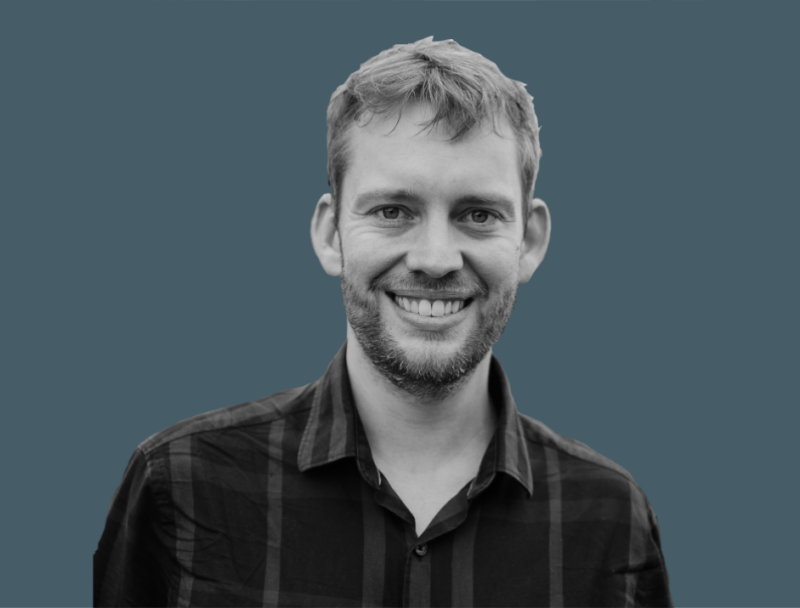When he was 15 years old, Ed Mitchard went to Brazil. For a teenager so keenly interested in tropical forests, this was a dream come true. Yet this was no school trip – Ed had won a competition to appear on a Japanese TV show. He now found himself 4,000 miles from home, in the depths of the Amazon rainforest.
Although Ed saw many areas of intact forest on his adventure, he also observed severe degradation and deforestation. Determined to make a difference, Ed pursued biology and forest ecology at university. As he learned more, it soon became clear to him that the world seriously lacked data on forest change. While there was some data on deforestation, Ed found nothing at all on forest regrowth.
Ever since his undergraduate, Ed has been countering this problem. Becoming a full professor at the University of Edinburgh, he has published approximately 100 papers on different methods for monitoring forest change. Now, as Chief Scientist at his company Space Intelligence, Ed uses innovative satellite technology to provide high-quality data on forest carbon, forest regrowth and habitat loss.
CAN YOU INTRODUCE YOURSELF AND EXPLAIN WHY YOU FOUNDED SPACE INTELLIGENCE?
During my PhD, I developed new ways of working with radar satellites to measure the biomass of tropical forests. Unlike other satellites, radar satellites allowed us to see through clouds from space which is absolutely essential if you want to monitor tropical forests all year round.
I continued to research and write papers on this topic, first as a Research Fellow and then as Professor of Global Change Mapping at the University of Edinburgh. Between 2015 and 2018, a colleague and I received requests from a number of REDD+ projects asking to use our technology to monitor deforestation. It was a little tricky to help them from within the university as they wanted maps within a shorter time frame than we could offer.
At the time, there was no one doing high accuracy monitoring, so the university encouraged us to start a company. So in 2018, we set up Space Intelligence. We were small – I kept my university job and we employed just one other person – but we provided maps to some of the world’s largest NGOs including the Wildlife Conservation Society and The Nature Conservancy.
Today, we have more than 50 employees and produce on-demand maps to support nature-based solutions. We work with project developers, predominantly in the tropics, who need us to produce the data to enable their carbon credits to be generated and validated. We also work with registries, such as Verra, to generate activity data for host countries. For Verra, we have generated activity data for Kenya and Tanzania which is supporting the introduction of their jurisdictional REDD+ methodology.
We also work with the stakeholders buying carbon credits from those projects, who tend to be global-north-based corporate and financial investors conducting due diligence. As Chief Scientist, I run the map production side of the business and focus on developing these technologies to improve the data we can offer in the future.
COULD YOU SAY MORE ABOUT THE PROBLEM YOU SEEK TO SOLVE?
Throughout my life, a steady one percent of tropical forest has been lost every single year. I’m 37 now and around 37 percent of the world’s tropical forests have been destroyed since the 1980s. For people, for biodiversity and for our levels of atmospheric CO2, deforestation is a massive crisis.
For a minute, let’s take it back to the ‘big picture’ problem. Every year, humans release about 40 gigatonnes of carbon dioxide into the atmosphere. The burning of fossil fuels accounts for 40 percent of that figure, while another 20 percent comes from deforestation. However, the atmospheric burden of CO2 only goes up by about 20 gigatonnes every year. Yes, this is still a lot, but about half of our emissions are absorbed by the oceans and earth’s vegetation. We need to stop burning coal and reduce our fossil fuel emissions, but simultaneously we must stop deforestation to conserve our natural carbon sink. It’s a no brainer.
Space Intelligence is playing a part in solving this problem. Without measuring forests, how can we know the extent of the problem or when we have made progress? This is why we
As governments start to make large transfers of cash to countries conserving forests, Space Intelligence is producing the data to make these transactions possible. There’s no way the UK government would transfer tens of billions of dollars a year to different tropical countries based on data produced by those countries themselves. Instead, they want to go to an external independent third party that uses the latest scientific methods.
Space Intelligence exists to be an independent provider of data. We don’t have data precomputed – we talk to clients about their requirements and then produce high-quality maps on demand. Our teams conduct the analysis and then will report back to the client.
LET’S GET TECHNICAL: HOW DOES YOUR PRODUCT WORK?
Space Intelligence produces on demand maps of land cover and forest carbon. First, I’ll speak about HabitatMapper, our tool to map land cover.
In HabitatMapper, every pixel is assigned a class such as tropical forest, degraded forest, savannah, grassland, urban area, agricultural land or water. We use a year’s worth of satellite data to determine these classes, meaning that every pixel has been viewed around 400 times using both optical and radar data.
We use this satellite data to train a machine learning algorithm to assign each pixel to the most likely class. This is very useful for project developers to work out how much forest they have within their site and to assess its deforestation rate.
Our second tool is called CarbonMapper. Instead of placing pixels into landscape classes, CarbonMapper only considers those pixels containing forests. While HabitatMapper would display a forest as uniform, CarbonMapper visualises the differing amounts of carbon stored in each pixel of forest.
You can estimate the carbon stored in a tree very accurately if you measure its diameter, height and water density. Obviously you can’t do all this from space, but on the ground it is very easy to measure a tree’s diameter. Once you know a tree’s species and diameter, height and water density can both be estimated accurately.
Space Intelligence monitors forest canopy height using space-born LIDAR and then correlates these height measurements with local field data. We try not to fly out to the places we map. Instead, our clients will employ local teams to collect field plots. Although this is anyway a requirement of the carbon standards, it provides us with the field data we need to calibrate our equations. From here, we can reveal if a forest is gaining or losing carbon and if deforestation occurs in carbon dense areas.
COULD YOU SHARE A STORY OF SUCCESS?
I’d like to talk about our recent work with Verra. This November, Verra announced updates to its REDD+ methodology as another step in increasing the overall integrity, transparency and efficiency of carbon markets. Under this revised methodology, it will be Verra, not project developers, who will provide baseline data. What’s more, the data will cover the entire jurisdiction.
When it considered making these methodology updates, Verra recognised that advancements in remote sensing can provide the accuracy needed to address some of the challenges in the market. Space Intelligence was selected by Verra to produce data for two jurisdictions – Kenya and Tanzania. We worked across an area of approximately 150 million hectares to provide Verra with maps and data on forest coverage and activity data on deforestation.
We followed our usual HabitatMapper process for this work, which included mapping around eight classes for each region across three time periods. We then converted these land cover maps to change maps with the following classes:
- Stable forest;
- Stable non-forest;
- Deforestation; and
- Reforestation.
In this type of work, distinguishing between vegetation types, especially accounting for seasonal changes, can be challenging. Indeed, an aerial view can change quite dramatically within the year as parts of the country look drier and wetter at different times.
To overcome these challenges, we sought the expertise of our ecologists and local partners in Kenya and Tanzania to identify the different vegetation types in our satellite imagery. Without this in-house ecological expertise – and without applying it to our machine learning models – our estimates of deforestation rates would not be accurate.
To test the performance of the maps, we undertook an independent accuracy assessment. More than 1,600 sample points were assessed, both internally and by our project partners, the Kenya Forest Service. For any points we disagreed on, we met for resolution sessions. As a result, we were able to supply Verra with jurisdictional level data with confidence.
AND FINALLY, WHAT’S NEXT FOR SPACE INTELLIGENCE?
As well as providing our on-demand maps, we’d like to continuously monitor our clients’ project sites. We want project developers to have a platform through which to access monthly data on their area and quickly catch illegal deforestation or natural degradation. It would also provide a visualised record of conservation successes that could be shared with customers and the public.
The prototypes are developing well, so our aim is for this product to be ready by the summer of next year. When I started out, there weren’t many people working in forest change mapping, but now I feel there is a lot more interest and commitment to stop deforestation.
Learn more about Space Intelligence here.



